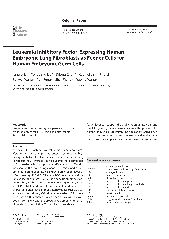摘要
A robust culture system is critical for maintaining both proliferation and the developmental potential of human embryonic germ ( hEG) cells. Here, we use human embryonic lung fibroblasts ( hELF) overexpressing leukemia inhibitory factor (LIF) as feeder cells to support the self-renewal of hEG cells. We examine the morphology, gene expression, and developmental potential of hEG cells grown on a feeder layer of LIF-expressing hELF (hELF/lif) cells. hEG cells were positive for alkaline phosphatase (AP), stage-specific embryonic antigen (SSEA)-1, SSEA- 4, tumor rejection antigen (TRA)-1-60, and TRA- 1 - 81. In addition, hEG cells maintained on hELF/lif expressed higher levels of pluripotency genes such as Oct4 and Nanog. In addition, hEG cells maintained on hELF/lif cells gave rise to differentiated tissues when grown as embryoid bodies, consistent with the broad developmental potential of the starting population. Our results suggest that a hELF/lif feeder layer can support the proliferation of hEG cells, and that LIF signaling plays an essential role in this process. This human-derived culture system provides an attractive alternative to more commonly used mouse-derived feeder layers for use in clinical applications.
- 出版日期2007
- 单位重庆医科大学
